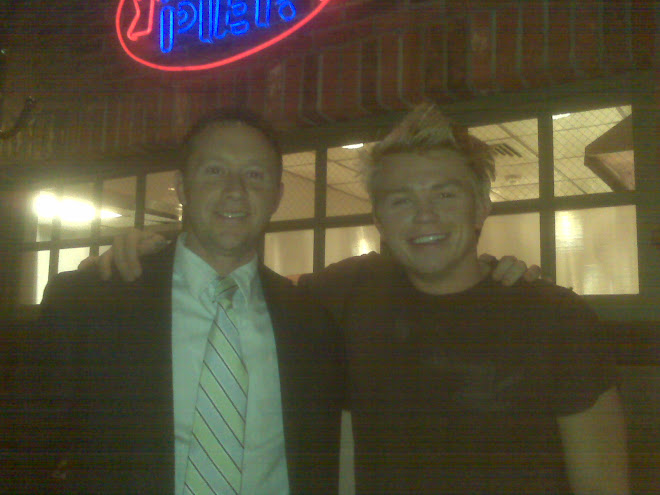Friday, January 2, 2009
Don't Like to Shovel??
According to the Surgeon General's Report on Physical Activity and Health, just 15 minutes of snow shoveling counts as moderate physical activity! And seeing as how the optimum stay-in-goal for aerobic activity is 30 minutes of moderate physical activity at least 3 times a week - then shoveling snow certainly fits the bill! The flip side of this is that just like any other kind of sports activity -- if you’re going to shovel snow you need to warm up first and stretch out a bit. Think of shoveling snow as an exercise similar to bent-over rowing that you would do with a barbell in the gym. Or compare it to bicep curls with a dumb bell or barbell. You wouldn’t just go in the gym and start doing those exercises without a warm-up. Researchers have reported an increase in the number of fatal heart attacks among those who shovel snow after heavy snowfalls. This rise may be due to the sudden demand that shoveling places on an individual's heart. Snow shoveling may cause a quick increase in heart rate and blood pressure. One study determined that after only two minutes of shoveling, a sedentary man's heart rates rose to levels higher than those normally recommended during aerobic exercise. Hey -- shoveling represents an intense workout even for healthy college-aged students! A study performed by researchers at North Dakota State University determined that, based on heart rate, shoveling was a moderately intense activity for college-aged subjects most of the time but was vigorous activity during about one-third of their shoveling time of 14 minutes. Shoveling can be made more difficult by the weather. Cold air makes it harder to work and breathe, which adds some extra strain on the body, so think before you shovel. Stretch out first, dress warmly in layers and bend at the knees when you’re hurling that shovel-full of snow. Remember to lift with your legs not your back.Now that I’ve presented a few safety concerns to you, let’s talk about snow shoveling technique! The goal here is to clear your sidewalks and driveway AND get in a nice cardio workout. !Make sure you have a good snow shovel. Most snow shovels have open ends that allow you to easily toss the snow off to the side. - Consider your physical condition. If you are out of shape you should proceed with caution. When you shovel you are simultaneously pushing, lifting and lunging, and this will have a quick effect on your muscles and stamina. Come to think of it, shoveling snow has a lot in common with chopping wood. Snow is heavy and shoveling is hard work - you don't want to risk a serious injury or jeopardize your health. If you have a heart condition or back problems, you should definitely not shovel snow unless your doctor approves it.- Work toward the areas where you are depositing the snow so that you have less distance to toss it as you tire. Chip away any ice that you find under the snow and remove the chunks with the shovel. - Spread rock salt over the cleared area to avoid icing. Sand any areas that remain slippery. As snow falls, you will find yourself outside shoveling every few days, which coincidently is what you want to be doing if you want to feel the benefits of shoveling snow! Shoveling snow presents challenges even for those of you who are reasonably fit. The National Safety Council offers the following tips to help you get a handle on safe shoveling: - Individuals over the age of 40, or those who are relatively inactive, should be especially careful. If you have a history of heart trouble, do not shovel without a doctor's permission. - Do not shovel after eating or while smoking. - Shovel only fresh snow. Freshly fallen, powdery snow is easier to shovel than the wet, packed-down variety. - Push the snow as you shovel. It's easier on your back than lifting the snow out of the way. - Don't pick up too much at once. Use a small shovel, or fill only one-fourth or one-half of a large one. - Do not work to the point of exhaustion. If you run out of breath, take a break. If you feel tightness in your chest, stop immediately
Subscribe to:
Post Comments (Atom)



No comments:
Post a Comment